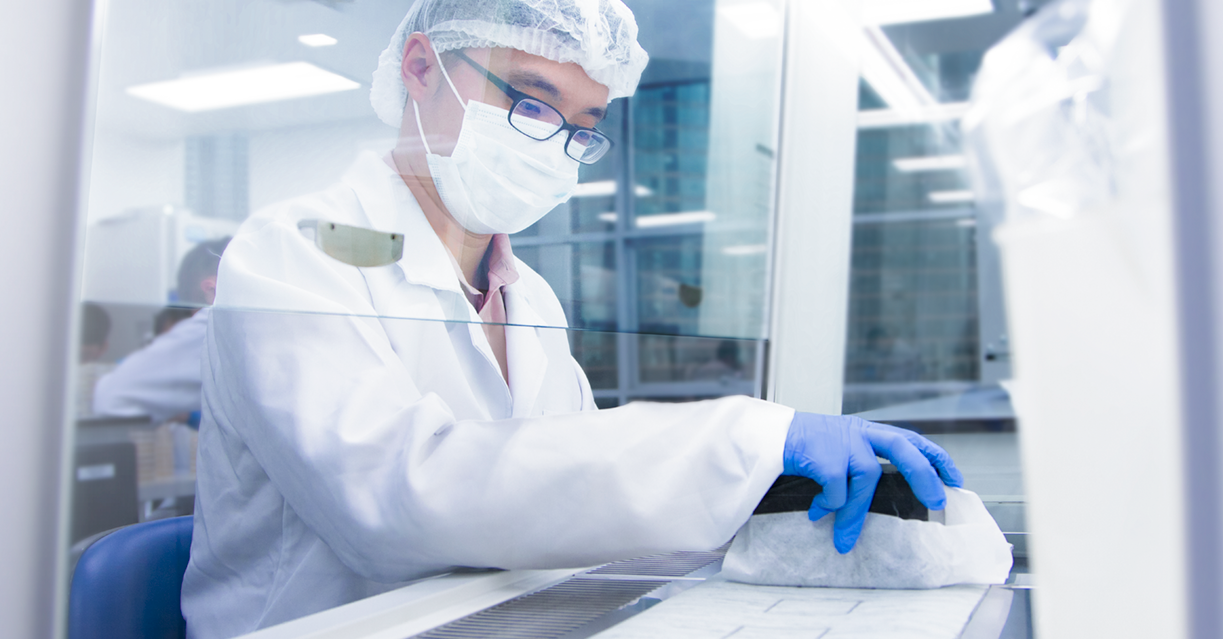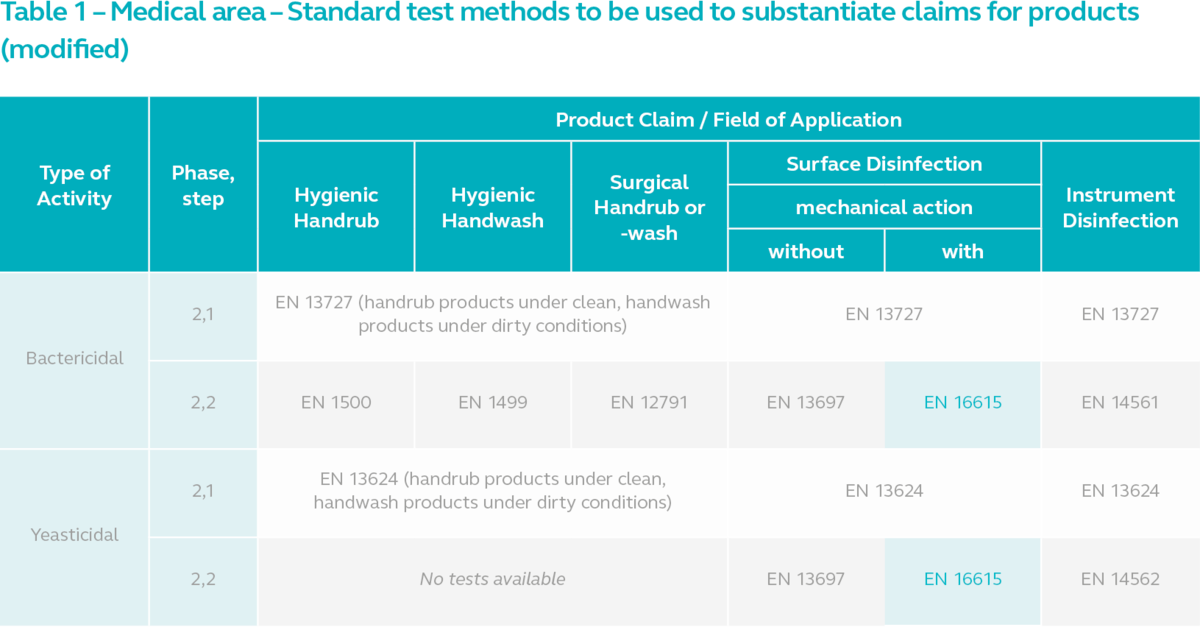01 March 2018
EN 16615:2015 - One Step Closer to Evaluating the Efficacy of Disinfectant Wipes Better
EN 16615 or 4-field test will become mandatory for disinfectant wipes when the revised EN 14885:2015 comes into effect soon in 2018

In 2008, a study on the efficacy of disinfectant wipes presented at the annual meeting of the American Society for Microbiology triggered several popular media channels to report the findings with sensational headlines such as Disinfecting Wipes May Spread, Not Kill, Germs and Germicidal Wipes Can Spread Bacteria. These news reports, albeit containing a certain amount of truth, did not paint an accurate picture of the situation and caused alarm.
Even so, viewed in the context of medical environments such as intensive care units (ICUs), operating theatres and dental clinics where disinfectant wipes are widely used, any claims that cast a doubt in standard practices must be given attention. Perhaps the claims had no basis. Maybe they did. But it became clear that disinfectant wipes must be subjected to tests that reflected their effectiveness in real-life scenarios.
Back then
Prior to the introduction of EN 16615 in 2015, the efficacy of disinfectant wipes used in the medical area in Europe was determined by performing a carrier test on the solution isolated from impregnated wipes without mechanical action. The trouble with this method was that:
- We could not determine if the amount of active ingredients actually released by a wipe is sufficient to inactivate microorganisms on a surface.
- We could not identify if the act of wiping can lead to cross-contamination.
- There was no visibility on the effects of mechanical action (wiping) in real-life situations.
Now
With these limitations in mind, German researchers developed a new method in 2015 to specifically test the efficacy of disinfectant wipes in real-life situations. It was approved as a standard in the European Union, EN 16615:2015. The new method represented real-life situations more closely and treated the solution and wipe as a unit instead of isolating the solution.
EN 16615 is also known as 4- Field Test. It is a quantitative test method for the evaluation of bactericidal and yeasticidal activity of disinfectant wipes intended for use in the medical area. The wipe is tested on a non-porous surface with mechanical action.
Up until now, EN 16615 has been an optional test for disinfectant wipes. The revision of EN 14885:2015 governing the application of European Norms for chemical disinfectant efficacy testing however, will see EN 16615 become a mandatory test for disinfectant wipes.

The method
- A strip of PVC with polyurethane surface coating measuring 20 x 50 cm is prepared by outlining four 5 x 5 cm squares to reflect the test area / test field.
- The first square is inoculated with 50 ml of either bacteria or yeast.
- The inoculum is spread evenly on the first square and left to dry. The rest of the squares are left untouched.
- A test wipe is placed just before the inoculated square and a 2.5 kg weight is positioned on the wipe. The weight is to imitate the pressure applied by hand when wiping. The weight also ensures that only the amount released onto the surface is available to disinfect.
- The weight is pushed from the side across the first square all the way to the fourth square in a swift 2-second motion to replicate physical wiping action.
- The weight is then pushed back across all the squares to the first square in another swift 2-second motion.
- The suggested contact time is observed before each square is sampled for observation.
An alternative method outlined in the standard suggests using a dry wipe recommended in the norm (or supplied by the manufacturer) soaked in 16 ml of disinfectant solution for 30 minutes. The wipe then goes through the same steps as above.
To pass, the test must eliminate 99.999% of bacteria on the surface (5-log reduction) or eliminate 99.99% of yeasts (4-log reduction).
It is worth pointing out here that EN 16615 evaluates the efficacy of disinfectant wipes on a surface area of 100 cm2; an area smaller than actual medical surfaces. This makes sense as the test is only intended to evaluate if a wipe is effective in actual situations. Not the maximum surface area a given wipe can disinfect effectively. At present, there are no tests in Europe or elsewhere to measure this.
The reality
The reality of the sensationalised news articles cited at the beginning of this post is that most disinfectant wipes in the market are generally effective and safe. The trouble stems from the way they are used.
In most cases, instead of using multiple wipes for large and different areas, only a single wipe is used. This reduces the efficacy of the wipe and leads to cross-contamination because:
- Alcohol based wipes are not able to remain moist for long due to weaker molecular bonds. The wipe becomes less effective once the alcohol evaporates.
- A single wipe can only absorb and withhold a limited amount of solution, alcohol or not. And it can only disinfect a certain portion of surface area effectively.
EN 16615 is a great start to simulating the use of disinfectant wipes in actual conditions. But more needs to be done to identify the practical limitations of disinfectant wipes to prevent misuse that can lead to cross-infection. This includes conducting studies to determine the maximum reach of disinfectant wipes.
Download PDF file
